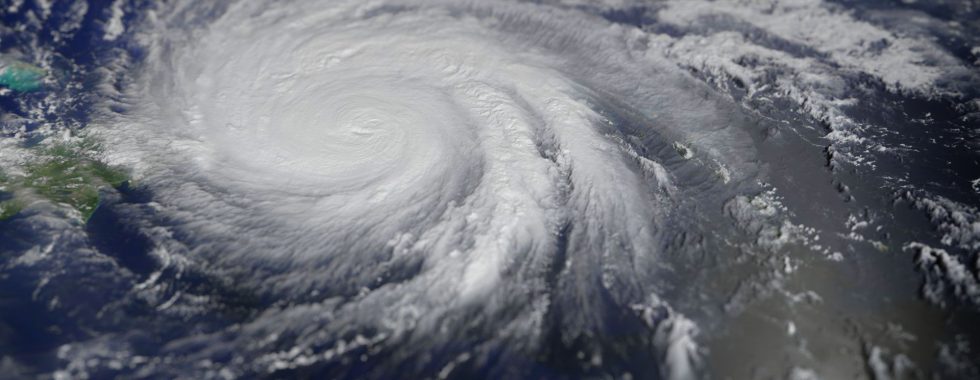
Hurricane Maria 20 September 2017 based on MODIS / Terra satellite image. Author: Antti Lipponen (file is licensed under the Creative Commons Attribution 2.0 Generic license)
Sponsor
US Dept of Defense Multidisciplinary Research Program of the University Research Initiative
Award Dates
2017 – 2023
Participants
Project Lead: Rachata Muneepeerakul
Project Participants: Jeffrey Johnson, Rafael Muñoz-Carpena, Michael J. Puma (Columbia University), Upmanu Lall (Columbia University), David N. Griffith (East Carolina University), Justin Schon
Goals and Objectives
The objective of the project is to create a theory to predict human migrations. This theory will integrate environmental change, human social system dynamics, and the corresponding interdependencies, to create and validate predictive models that capture these dynamics to anticipate the trajectory of environmental change and human effects on these changes. Environmental changes that are likely triggers of a migration episode and thus are being modeled include climatic attributes that influence regional hydrologic characteristics. Case studies for the project include:
1. Hurricane Mitch and the Honduran-U.S. Migration patterns
2. Hurricane María and Puerto Rican migration to Florida
3. Famine-induced migration in Africa
4. Syrian refugee crisis
Project Outputs
Bonnafous, L., Lall, U., & Siegel, J. 2017. A water risk index for portfolio exposure to climatic extremes: conceptualization and an application to the mining industry. Hydrology and Earth System Sciences, 21(4), 2075.
Dalin, C., Y. Wada, T. Kastner, and M.J. Puma, 2017. Groundwater depletion embedded in international food trade. Nature, 543 (7647): 700-704, doi:10.1038/nature21403.
Muneepeerakul, R. & J.M. Anderies. 2017. Strategic behavior and governance challenges in social-ecological systems. Earth’s Future, 5, doi:10.1002/2017EF000562 (selected to be featured as a Research Spotlight on https://Eos.org and on the journal’s website)
Puma, M.J., Chon, S.Y., Kakinuma, K., Kummu, M., and Muttarak, R., 2018. A developing food crisis and potential refugee movements. Nature Sustain., In press (tentatively August).
Torreggiani, S., G. Mangioni, M.J. Puma, and G. Fagilo, 2018. Identifying the community structure of the international food-trade multi network. Environmental Research Letters 13 (5): 054026, doi:10.1088/1748-9326/aabf23.

